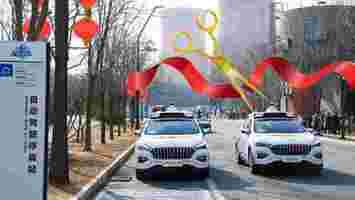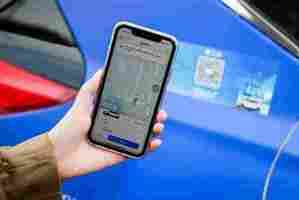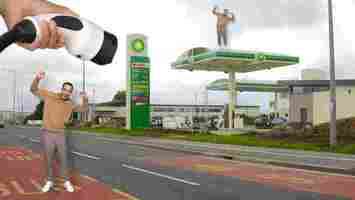How the GoCarma app can change driver behaviour
GoCarma confronts the problem of cheating commuters



The GoCarma app uses Bluetooth and GPS in the Dallas-Fort Worth Express Lane locations to verify there are at least two people in the vehicle. Vehicles with a verified HOV status then receive a 50% HOV toll discount.
Specifically, the app measures occupancy. It counts how many phones are traveling together in a vehicle.(If you’re in the car with people without a smartphone such as kids, an Occupant pass can record their presence in the car).
HOV tolls are becoming the norm
Over 45,000 daily commuters in Dallas-Fort Worth use Carma technology. Carpool rates have increased by 15% in a little over a year.
Paul explained the need as part of a bigger push to increase HOVs:
So, the tech has come at a great time, as cities focus on improving their carbon emissions. To date, Dallas-Fort Worth commuters have saved roughly 3300 metric tons of CO2 by choosing to travel together using GoCarma instead of driving alone. That’s the equivalent of reversingCO2 emissions from just over 700 passenger vehicles driven for one year, or 400 homes’ energy use for one year. Impressive, right?
Removing police from minor road violations
An additional advantage of apps like GoCarma is that they remove HOV enforcement from police. Many are calling for the need to separate police from non-critical traffic enforcement tasks.
An extensive investigation by The New York Times found that many cities utilize police as revenue agents for traffic violations, instead of public safety infractions. As a result, driving is one of the most common daily routines during which people get shot, tasered, beaten, or arrested after minor offenses.The New York Times identified 400 cases from the past five years in which officers killed unarmed civilians who had not been under pursuit for violent crimes.
For catching HOV violators, the use of police is also a highly inefficient form of policing.
As Paul explained:
By using technology such as GoCarma, enforcement saves time and money. Violation detection shifts from the police, reducing police shootings and police injuries in the line of duty.
GoCarma acts as a deterrence to repeat offenders
If you get caught in a HOV lane without exemption, the fines can be steep. For example, in California, a HOV lane violation ticket is a minimum $490 fine. Many states even have additional fines for anyone caught trying to use a doll or dummy to fake passengers.
But maybe there’s another way? As Paul shared: “What we’ve been able to do in Dallas is by flipping that model, going away from enforcement and moving to verification.”
With GoCarma, violating users receive a series of escalating warnings. Carma reports that 98% change their behavior before the fourth notification. While habitual violators get suspended from HOV discounts for 30 days, they can still use the managed lanes. To date, less than one of every 1,000 users has received a suspension, with violation rates lower than 2%.
Carma is upgrading their platform next year to allow cities to deploy congestion pricing easily. But as Paul explained:
Carma’s work in Texas has attracted national and international attention with interest in cities such as Bogota and Dublin. The company received a Toll Excellence Award for innovation from the International Bridge, Tunnel and Turnpike Association.
As Paul noted:
Changing driver behavior is hard. But where punishment has failed, Carma might have found the solution, incentivizing drivers to do the right thing.
Self-driving robotaxis are now an actual ‘thing’ in China
Yesterday, leading tech company Baidu launched China’s first commercial fully autonomous taxi service.

10 of the company’s Apollo Go are now operating at Beijing’s Shougang Park – one of the venues of the upcoming 2022 Beijing Winter Olympics – covering a 3 square kilometer range with eight pick-up/drop-off stops, reported Shanghai Daily .
With no driver behind the wheel, Baidu aims to deliver a real driverless experience à la Waymo , although for now, a safety staff member occupies the front passenger seat to take over in case of an emergency.
Passengers can call a robotaxi via the Apollo Go App. They can locate it using virtual reality navigation and remote car honking. When the taxi arrives, they need to scan a QR code and a health code for identification and pandemic prevention purposes.


The taxi will start its journey after the seatbelts are fastened and the doors are shut.
Each trip costs ¥30 ($4.60), and anyone aged between 18 and 60 can hail a ride.
Apart from enabling transport services during the upcoming Winter Olympics, Baidu plans to expand its robotaxis in more Chinese cities.
With this move, the company is leaving its other Chinese competitors such as WeRide, Didi, and AutoX behind.
That also should help China rival the US in smart mobility, and hopefully further the country’s mission to tackle its severe environmental pollution issues .
Do EVs excite your electrons? Do ebikes get your wheels spinning? Do self-driving cars get you all charged up?
Then you need the weekly SHIFT newsletter in your life. Click here to sign up .
VW and oilmonger BP pledge to bring 18,000 ultra fast EV chargers to Europe
Good news Europeans, thanks to a partnership between BP and Volkswagen, electric vehicle charging across the continent could be getting a boost.

What’s happening
VW and BP will work together to deploy 18,000 new ultra fast chargers in Europe, but it hasn’t said by when.
It seems the chargers will be added at bp and Aral sites in the UK and Germany to begin with, BP said in an announcement .
VW says it will integrate BP’s charging tech into its vehicles so that finding and paying for charging is easy and simple.
The points will also be open to the wider non-VW driving public as part of the BP and Aral pulse charging networks.
Why it matters
BP says that around 90% of the population of the UK and Germany live within 20 minutes of a BP or Aral filling station.
With demand for fast EV charging growing, we need more big players to work together to improve infrastructure.
For VW drivers, it could make fast-charging as simple as a Tesla using the Supercharger network.
Effectively what we’re seeing here is the start of what will likely be an industry-wide transition for big oil companies. A transition that will see them move to supporting electric vehicles, and produce more renewable energy.
In terms of infrastructure, most petroleum companies are ready to go. They have forecourts in good locations, all we need to do is switch out pumps for chargers.
That won’t be easy, as there is still significant demand for dinojuice, but there will come a day when batteries can charge quickly , and people won’t need fuel anymore.
When that day comes, you can bet that old petrol forecourts will still be here, they will just pump electrons instead of gasoline. VW and BP has made its commitment, and we’ll be making sure it delivers.